

|
|
|
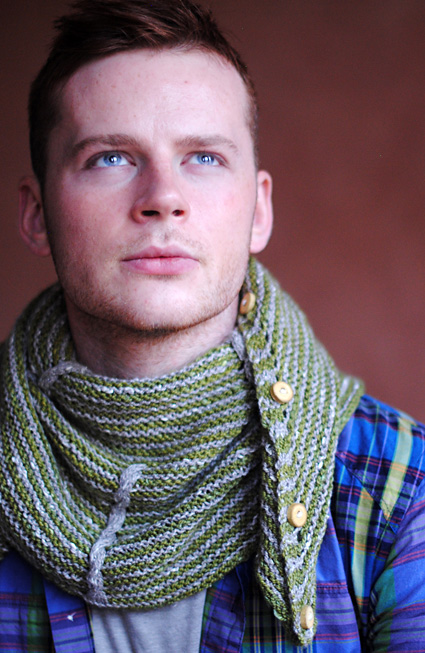
Stripes and cabled slipped stitches add a punch of graphic sophistication
to this stylish scarf. I love combining playful shapes and construction techniques with simple fabrics. Groove starts by casting on 72 sts. Yarn over increases within the fabric lie next to the slipped stitch columns, shaping the fabric into an arch. The simple garter stitch allows you to focus on the construction elements while the addictive stripes keep you saying, "Just one more row!" |
||

|
Tweet
|
|
|
SIZE |
|
|
FINISHED MEASUREMENTS |
|
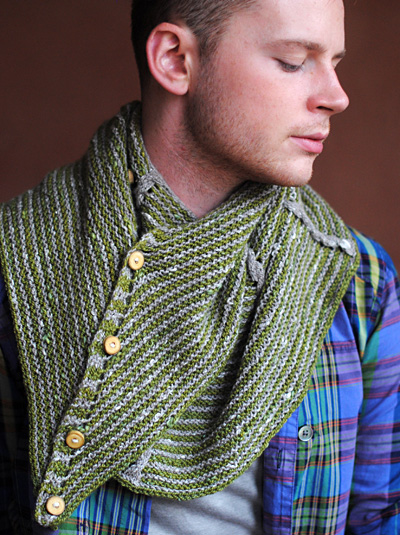 Yarn The Fibre Company Acadia [60% Merino, 20% Silk, 20% Alpaca; 145 yd/133m per 100g skein] Recommended needle size [always use a needle size that gives you the gauge listed below -- every knitter's gauge is unique] Notions GAUGE 18 sts/40 rows = 4 inches in garter stitch PATTERN NOTES Slip markers when you come to them unless otherwise indicated. All stitches are slipped purlwise. C4B: Slip next 2 stitches to cable needle and hold in back;
k2, then k2 from cable needle |
|
DIRECTIONS 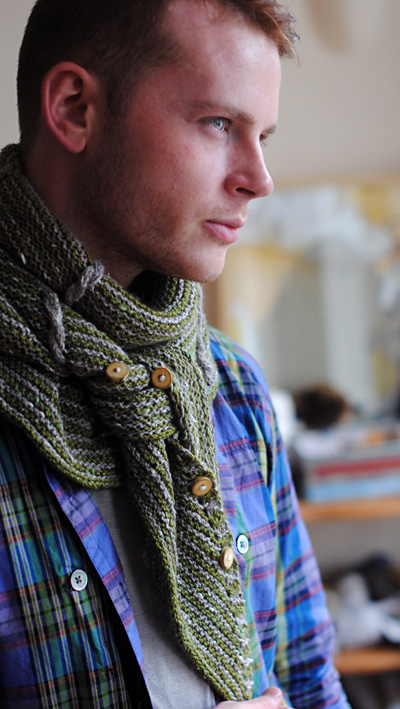
Using MC, CO 72 sts. K 5 rows. Row 6 [RS]: K3, yo, (k10, yo, pm, k4, pm, yo) 4 times,
k10, yo, k3. 82 sts. SECTION 1 Repeat last 8 rows 4 more times, then repeat Rows 1-3 once more. There should be 11 CC stripes and 214 sts: 48 before first marker; 34 between the cables; 48 sts after the last marker. In the next row, place additional markers; leave the existing
ones in place. 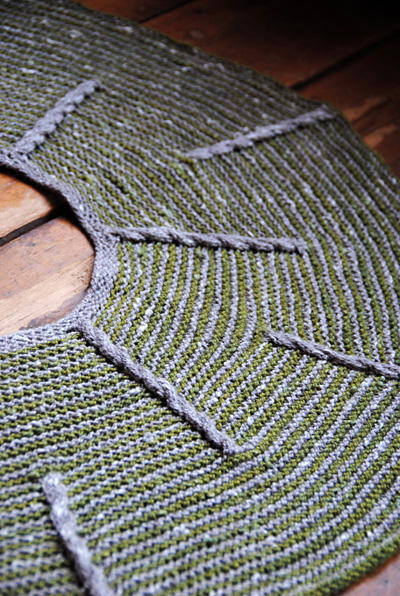 Row 1 [RS]: Using CC, k3, yo, (k to m, sl4) 9 times, k to last 3 sts, yo, k3. 2 sts increased. Row 2 [WS]: (K to m, sl4) 9 times, k to end of row. Row 3 [RS]: Using MC, k3, yo, (k to m, C4B, k to m, yo, slm, k4, slm, yo) 4 times, k to m, C4B, k to last 3 sts, yo, k3. 10 sts increased. Row 4 [WS]: (K to m, p4) 9 times, k to end of row. Row 5 [RS]: Using CC, k3, yo, (k to m, sl4) 9 times, k to last 3 sts, yo, k3. 2 sts increased. Row 6 [WS]: (K to m, sl4) 9 times, k to end of row. Row 7 [RS]: Using MC, k3, yo, (k to m, k4, k to m, yo, slm, C4B, slm, yo) 4 times, k to m, k4, k to last 3 sts, yo, k3. 10 sts increased. Row 8 [WS]: (K to m, p4) 9 times, k to end of row. Repeat Rows 1-7 once more. There should be 15 CC stripes and 262 sts: 37 sts before the first marker; 19 sts between the cables, and 37 sts after the last markers. In this next row, you’ll remove the first set of the markers but leaving the second set in place. Next Row [WS]: (K to m, p4, k to m, remove m, k4, remove
m) 4 times, k to m, p4, k to end of row. Repeat last 8 rows 4 more times. 402 sts. |
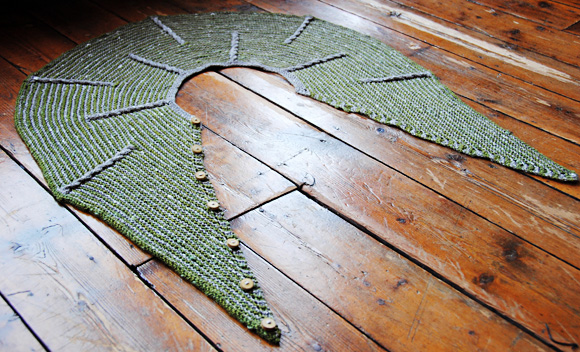
|
|
FINISHING |
| ABOUT THE DESIGNER |
|
|
|
Pattern & images © 2011 Stephen West. Contact Stephen |